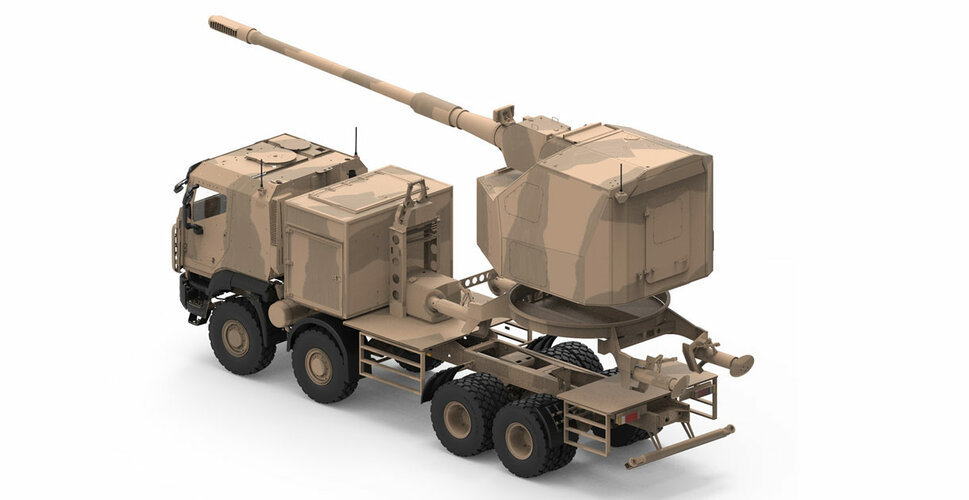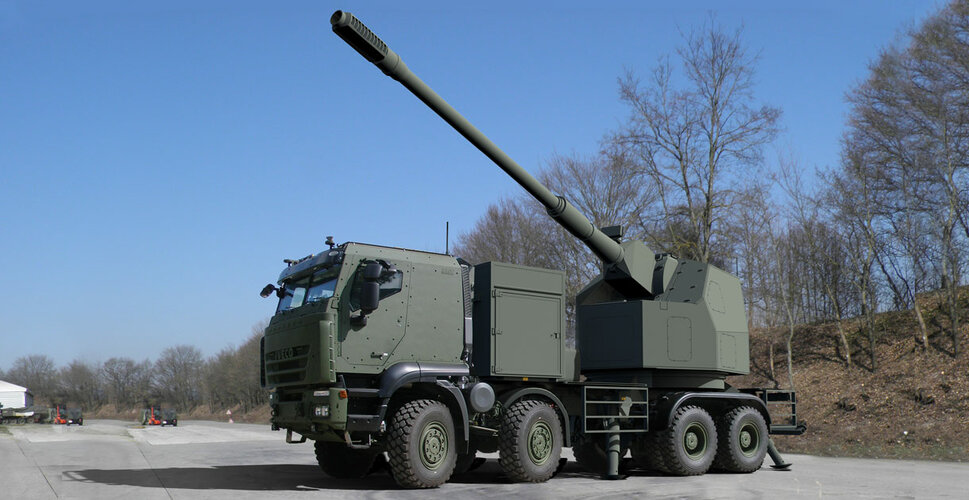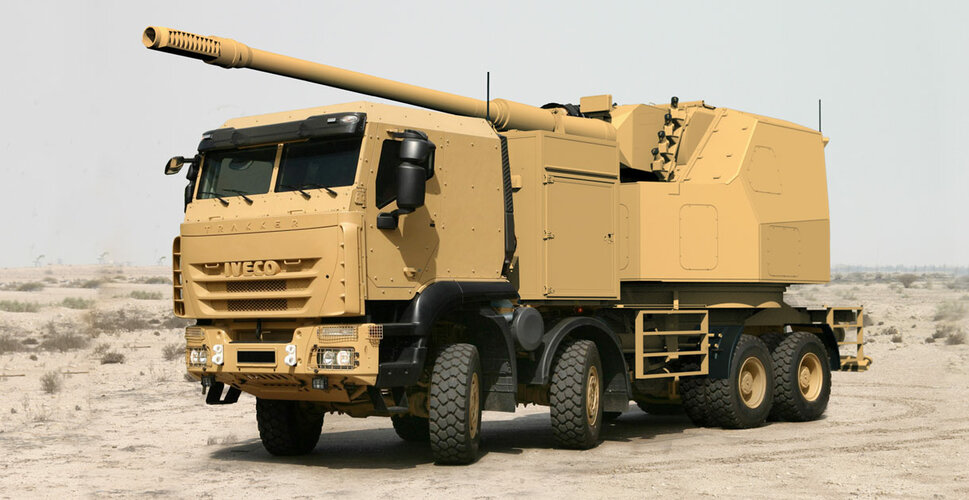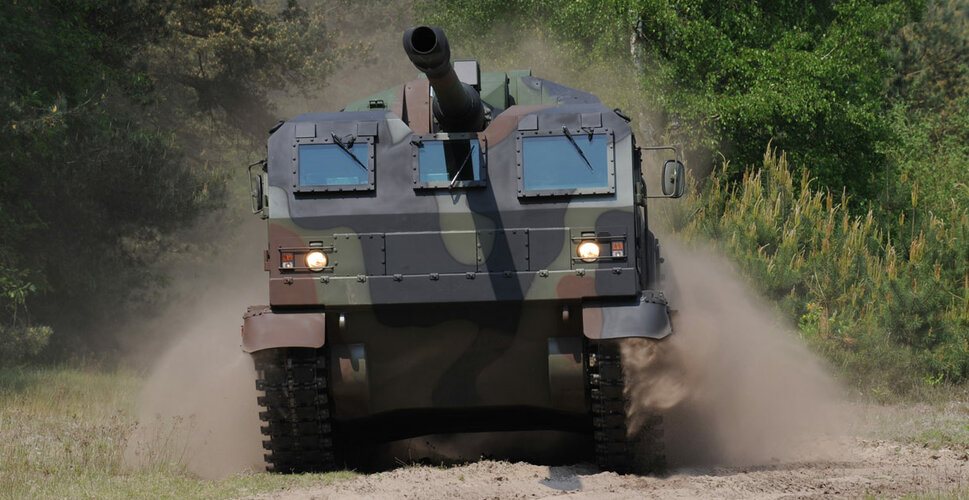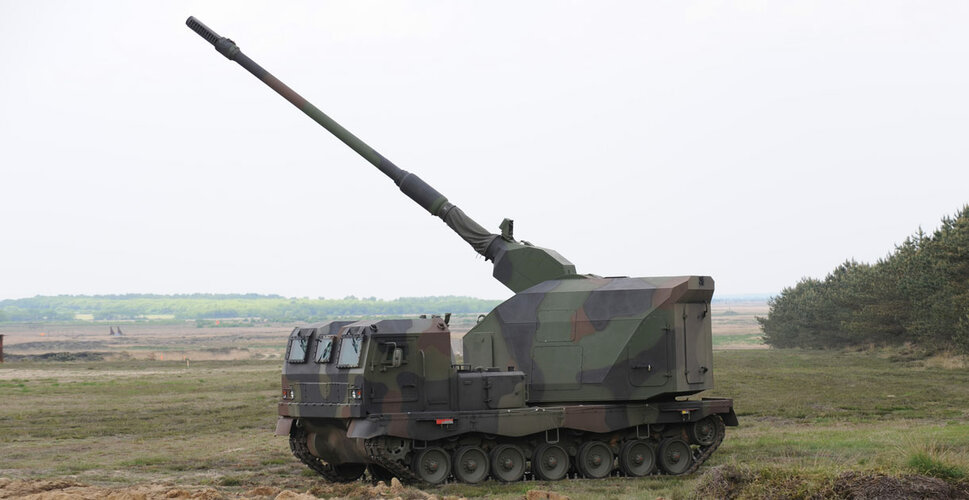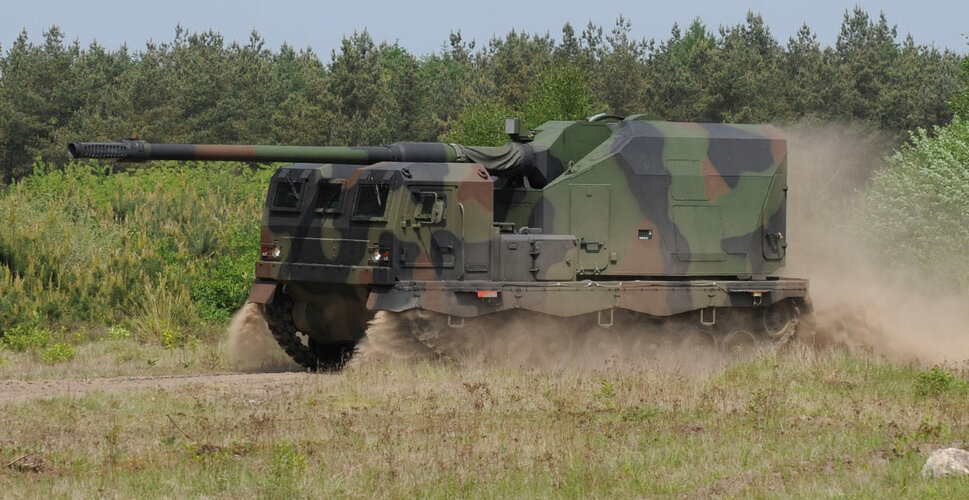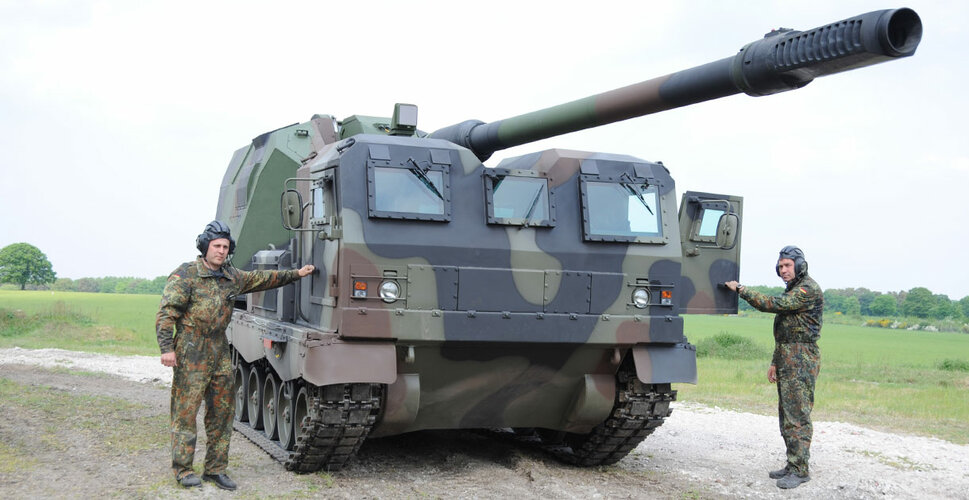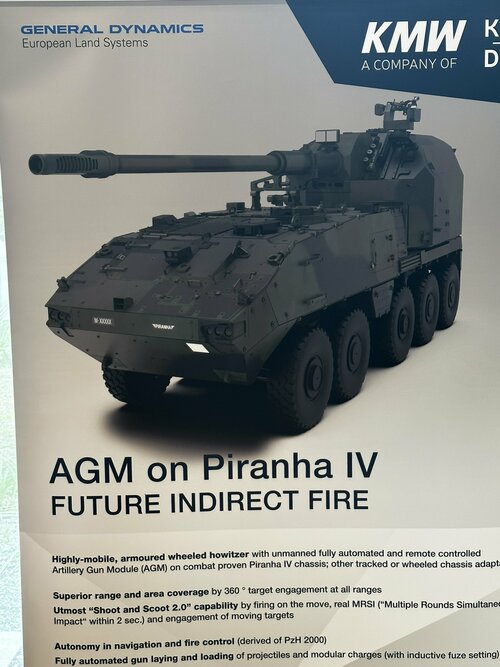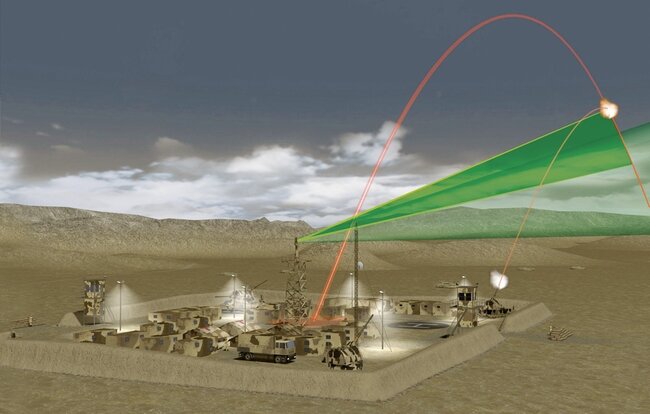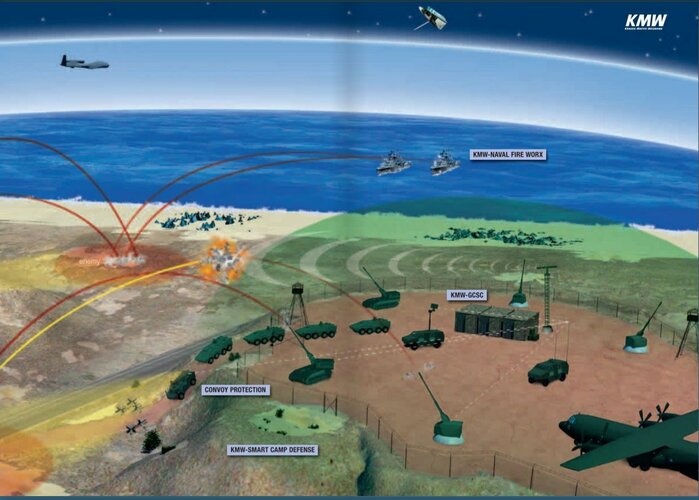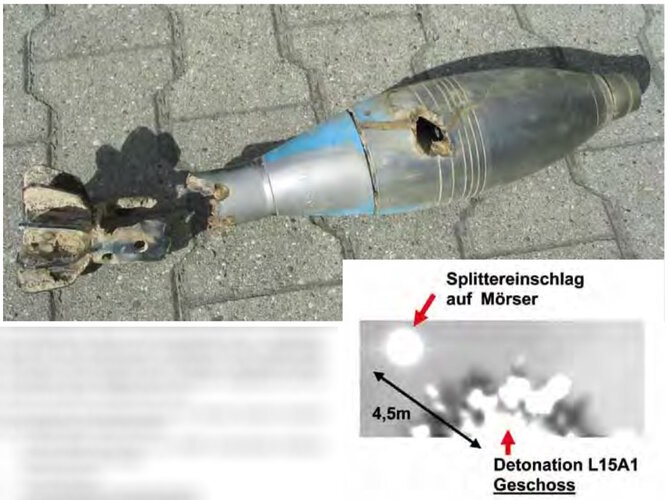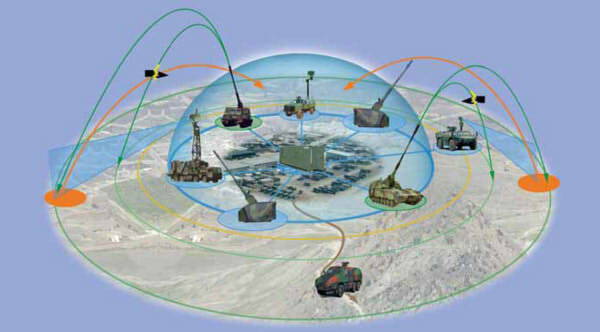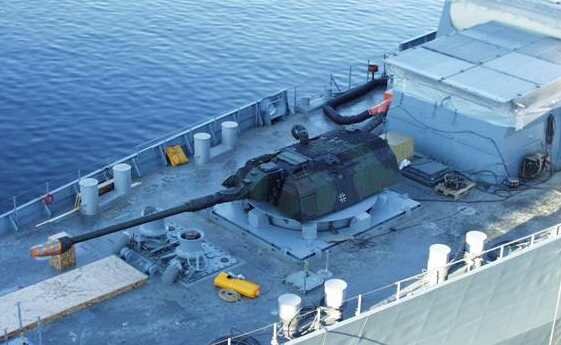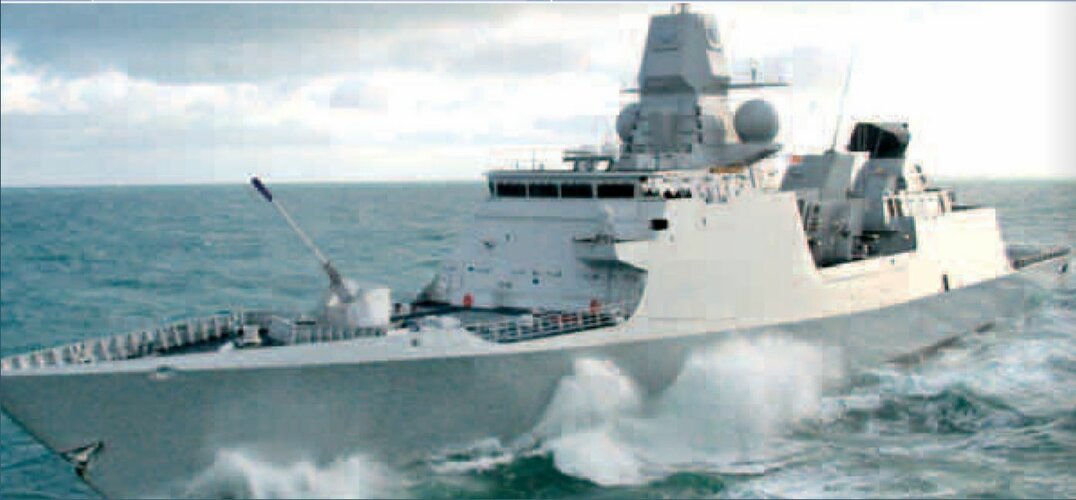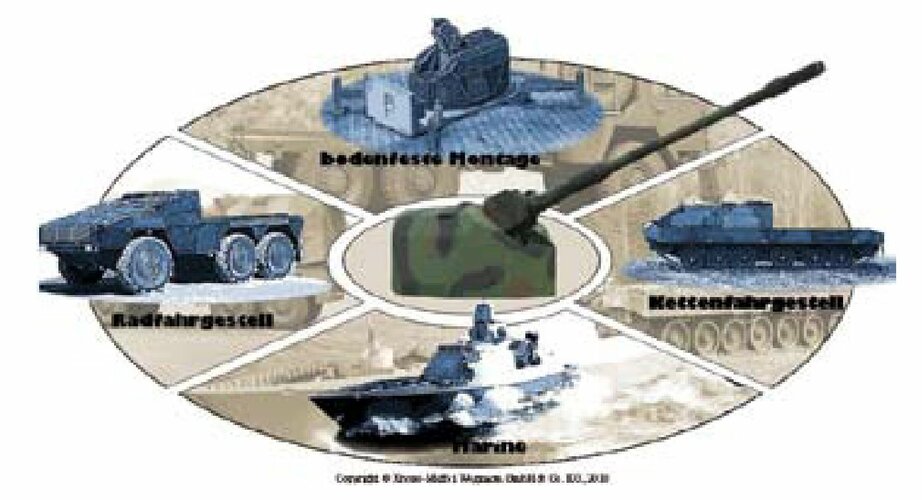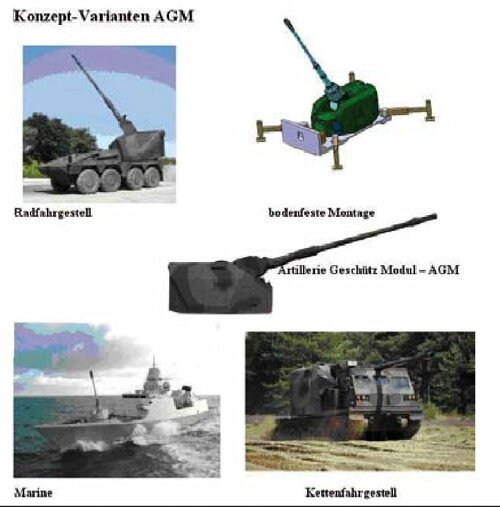Further development of artillery Smart Camp Defense (SCD)
With Smart Camp Defense, Krauss-Maffei Wegmann (KMW) is developing an effective and modular system for active defense against rocket, artillery and mortar and mortar threats (RAM).
The basic idea behind the company's development was to use systems or components already in use or existing systems or components to counter threats. The system will be modular and adaptable to adaptable to other systems.
The smallest operational equivalent for this system consists of of the following components:
- 2 PzH 2000 or the KMW-developed artillery AGM gun module.
- tracking radar
- Fire control center/fire control software
- Remotely triggered fuze
- 155mm HE projectiles
The principle operation of the system is described described below:
The weapon system is connected via a fire control center to a tracking radar, which receives target data from a suitable search radar.
The threat is focused and tracked. Location and speed data are constantly transmitted to the fire control center.
The fire control software developed by KMW calculates a prediction of the trajectory and an optimal intercept point. The
system continuously aims at the target with the appropriate lead. At the optimum moment, the shot is triggered automatically.
During the combat sequence, the follow-up radar can track both its own projectile and the attacking RAM target. This means that the fire control computer automatically knows the two trajectories which then calculates the most favorable ignition timing of the remotely triggered fuze.
The calculation also takes into account the angle of encounter at which the two projectiles approach each other.
When the fuze is triggered, the artillery projectile detonates and the high-energy fragments created by the detonation destroy the RAM threat.
The ideal interception point is chosen so that collateral damage from falling fragments is minimized. If the expected point of impact of the enemy projectile is not a threat, the defensive action is not initiated in the first place.
The trajectory calculation can be used to determine the enemy's position from which the enemy projectile was fired. A direct counter fire against this position is possible and subsequent attacks are prevented.
The engagement distance for RAM targets is between one and three kilometers. The engagement of other targets, such as drones or helicopters, is possible, as long as they are on a predictable flight path.
Tests conducted as part of an R&T project at Wehrtechnische Dienststelle (WTD) 91 in Meppen have already demonstrated the effectiveness of the system. In encounter firings with 155mm projectiles against inert 120mm mortar rounds, devastating hits were achieved. A high-speed camera was used to record the encounter situation of the projectiles in the air.
Shrapnel impacting the RAM target produced a flash of light in the film recording, which can be seen in the figure. One hit mortar round could be recovered because of the boggy soil in the Emsland. The 120mm mortar round shows a large hull penetration and a torn tail unit.
As mentioned at the beginning, KMW uses mostly existing components in the supply chain for camp protection with artillery. The only adjustments to be made to the PzH 2000 are to the weapon alignment system and the control software. The remotely triggered fuze is a DM74 with modified electronics. All 155 mm explosive rounds, such as the L15A1, can be used as projectiles. For the search radar, there are commercially available solutions that can also detect missiles at low altitudes.
As a follow-up radar, a high-resolution device is used, which among other things is used as a measuring radar on the WTD91. The networking of these systems via the fire control center guarantees fully automated tracking and engagement of approaching RAM threats in a matter of seconds.
User countries of the PzH 2000 can use existing systems for field camp/object protection. The PzH 2000's multi-role capability allows the armed forces of these countries to use this effective system virtually unchanged, drawing on the weapon system's existing logistics chain. Alternatively, the system can be operated with the AGM (artillery gun module). The fully automatic AGM can be deployed unmanned and remotely operated (24 hours a day/7 days a week) with the same precision and approximately the same rate of fire as the PzH 2000.
Smart Camp Defense owes its ability to effectively counter the threat to the combination of reaction speed, precision and firepower of the PzH 2000 or the unmanned artillery gun module.
Currently, Smart Camp Defense is under in-house development. Shooting tests on the grounds of WTD 91 in Meppen and in Putlos were promising. Shooting using high-explosive RAM projectiles and high-explosive HE artillery projectiles is planned. KMW is pursuing the concept of open architecture in the software in order to be able to connect further sensors and effectors and to respond flexibly to the requirements and wishes of the users.

